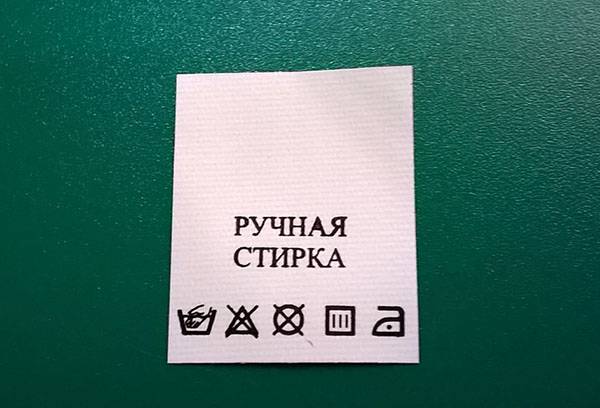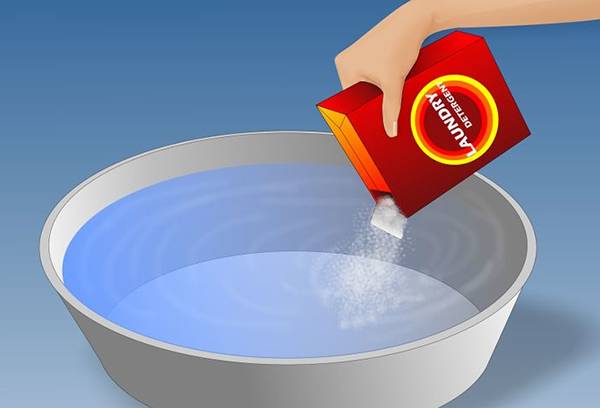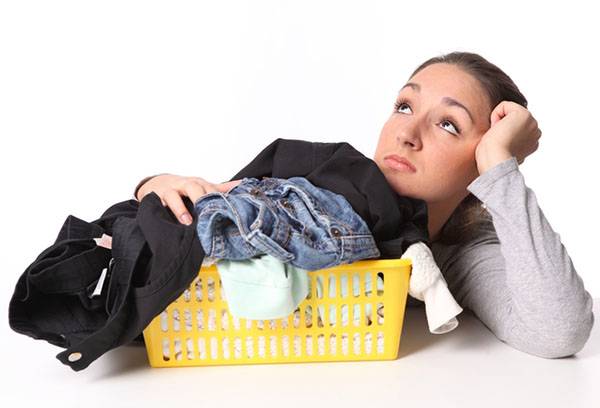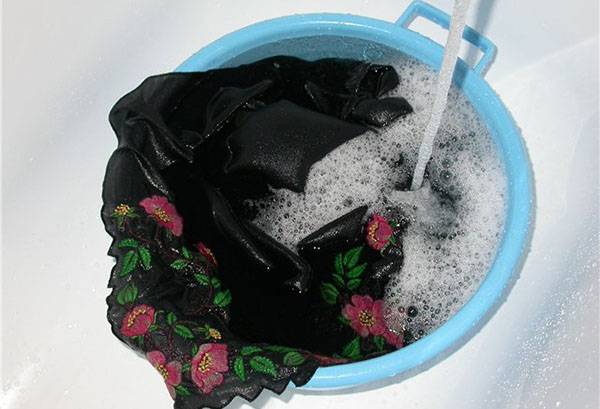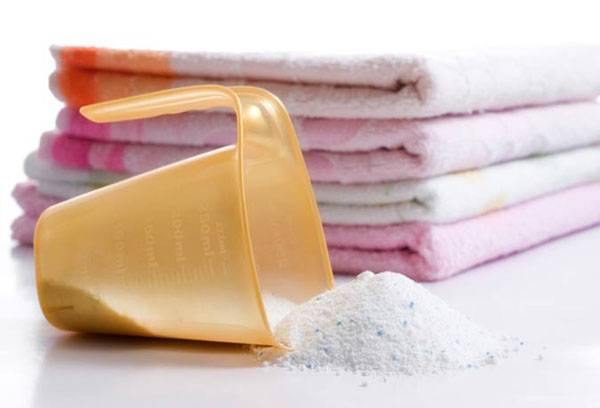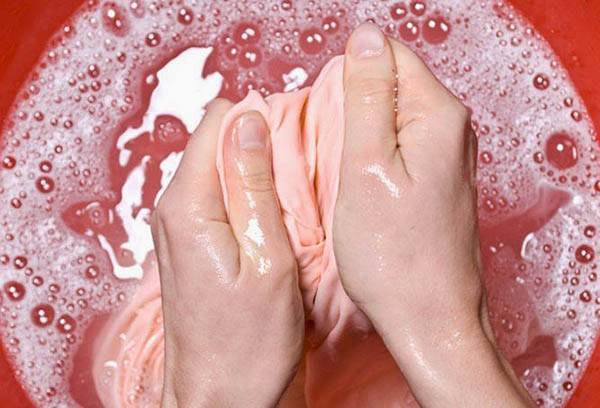How to wash things by hand?
Content:
Hand wash is not as much in demand as it was before, because almost everyone has a washing machine at home. But in case of a breakdown of the "assistant" you have to work with pens. There are also things that machine wash is contraindicated. Of course, in modern "washing machines" a delicate mode is provided. But not on all machines it works correctly.
What can not be washed in a washing machine?
On the tags of some things there is an icon - a basin of water is schematically depicted, in which the hand is lowered. This is what makes us abandon the washing machine. In most cases, manufacturers are reinsured so that in the event of a defect after machine washing they are not liable. But sometimes a washing machine can really damage the product. Also in the machine you can not put things with some types of pollution.
What can not be machine washed?
- Things contaminated with oil products - gasoline, engine oil, kerosene. Getting on rubber parts of the machine, they can corrode them. When pollution is extensive, fumes of flammable substances can cause an explosion.
- Leather and leatherette clothing. The product will lose its shape and color.
- Thin lace items (if the delicate washing mode is not provided). In normal operation, lace may break.
- Products with a rigid form - suits, coats, hats. But washing in a basin is also not recommended. Better to dry them.
Unlike machine wash, everything can be washed manually. Well, or almost all - except for things that require chemical treatment.
How to prepare for the hand wash process?
Having decided to wash by hand, first prepare everything you need:
- 2 coxae;
- detergent;
- rinse aid;
- rubber gloves;
- contaminated things.
Put the bowl so that you do not have to bend too much. Otherwise, the back will get tired very quickly. You can put a wide board on the sides of the bathtub or put a basin on a chair.
Rubber gloves are a must if you want to keep your pens soft and healthy. Aggressive detergents corrode the upper layer of the skin, after which redness and cracks appear on the hands.
How to sort contaminated items before hand washing?
Things are sorted the same way as machine wash. The principles of sorting are simple.
- White and colored items are washed separately.
- Colored things are divided by color - blue to blue, red to red.
- Products made of delicate fabrics are washed separately from other things.
When washing manually, first lightly soiled items are washed first, after which darker or stained items are placed in the same water. Water changes as it gets dirty.
Note!
If during washing the water became “colored” (green, blue, red, yellow, black or another color) - your thing has faded. Such water needs to be changed, otherwise pigments will dye the fabric of the next product placed in the water. Washing of a product similar in color is allowed - at your discretion.
What is the temperature required for hand washing?
The temperature of the water is selected not only on the basis of the permissible washing temperature of the product. Water should not burn your hands. You can withstand a maximum of 50 ° C.
Often, product tags are trimmed so that they do not rub the skin. The right degree of water heating can be selected based on the type of fabric.
- Natural fabrics of plant origin - linen, cotton - are washed at any temperature and with any intensity.Things from them do not sit down, do not stretch. Colored things rarely fade.
- Natural fabrics of animal origin - silk, wool. Water temperature 30-40 ° C. Things from these fabrics are finicky, they need to be washed carefully and practically do not wring, but let the water drain.
- Viscose - washing in cold water is recommended. Washing temperature no more than 30 ° С.
- Synthetic fabrics - lavsan, acrylic, lycra. Water temperature 40-50 ° C.
- Combined fabrics (most often used) - cotton + nylon, wool + lavsan, etc. The washing temperature is 40-50 ° С.
If you do not know what fabric your product is sewn from, wash in warm water (approximately 30-35 ° C).
How to choose a detergent for hand washing?
For handwashing, select only products that have the appropriate mark.
- Handwash powders contain less aggressive components and are more sensitive to hand skin. Be sure to ensure that the powder is completely dissolved in water. Only then put the item in a foam solution. Granules of powder are very concentrated. Getting on fabric, they corrode it.
- Washing gel is a good solution. It quickly dissolves in water. This property is especially important for products requiring handwashing at low temperatures. Powder in cold water dissolves longer than in warm water.
- Laundry soap is an unfairly forgotten detergent. It perfectly cleans complex impurities, sparing the skin of the hands, and does not cause allergies. The use of soap for underwear, which is in close contact with the skin, is especially important.
- Oxygen bleach is used to remove stains from the fabric. Eliminates any organic pollution, while maintaining the color of the linen. Please note - oxygen bleach is for white and colored linen. Do not confuse.
- Chlorine bleach is used only for white linen made from natural fabrics. It removes stains and grayness. Chlorine bleach is very aggressive, and chlorine fumes are harmful. Use it only when necessary.
It's important to know
Artificial fabrics - lavsan, lycra, acrylic - can not be washed with alkali products. These include some powders (see composition) and laundry soap that contains sodium carbonate.
Natural animal tissues - wool, silk - cannot be washed with enzymes that break down proteins. Choose special tools so that things serve you as long as possible.
How is the hand wash process?
How to wash by hand? A properly executed washing process looks like this.
- Choose a place to wash. It should be with access to water. It can be washed in the bathroom or outdoors near the column or well. If there is no hot water, you will have to carry hot water from the kitchen.
- Pour water of appropriate temperature into the basin. Add the powder or gel to the water in the amount indicated in the instructions. Mix by hand until foam. Make sure the powder crystals are completely dissolved. If you decide to wash with soap, just put it near the basin.
- If clothes require heavy washing, put things in foamy water and wait 15-20 minutes. Heavily soiled items can be soaked for 2-3 hours, bedding - at night.
- Rub your laundry with your hands not only in places of dirt, but also over the entire surface. Can be used for washing a washing board. If you wash with laundry soap, pre-soap the item. Soap can also be used in addition to powder.
- Remove clothing from the basin by slightly squeezing it and place in the rinse basin.
- It is recommended to rinse clothes 2 times - in warm and cold water. Rinse with warm water first, trying to remove as much foam as possible. Then repeat the process with cold water.
- Squeeze the item lightly, removing as much water as possible. Do not overdo it so that the thing does not deform. Delicate things can be wrapped with a dry towel instead of spinning, taking water.
- Hang things or lay them on the dryer.If you are drying clothes in the sun, do not forget to turn it inside out. Remember that products made of wool and cashmere are stretched during vertical drying. If there is no dryer, put a towel on the table and put a thing to dry on it.
- Wait for the item to dry and remove it from the rope or dryer.
Now your things are clean.
Tip
To prevent your clothes from freezing during the drying in the winter, add a handful of salt to the water during the last rinse.
Hand wash - laborious work. Armed with knowledge to simplify this process, and washing will no longer be an unloved occupation.
